Alessandro does not speak English, but that is no impediment to communication. First, because he has an assistant — actually, his niece Stefania — to translate. But more importantly because he communicates perfectly well on his own: He waves his hands, he demonstrates, he laughs, and just now, he wears an expression of disgust that needs no translation.
In Your Bucket Because…
- Cooking brings people together, and where better to do it than in the heart of Italy’s foodie capital of Emilia-Romagna?
- You’ve always wanted to know why there are 100 different kinds of pasta.
- Good for: foodies, gourmets, and the gastronomically curious.

“Spaghetti Bolognese!” he exclaims with a disbelieving shake of the head. Clearly, a crime against cuisine has been committed. Stefania helps with the details, but has trouble keeping up: “There is no such thing! Ridiculous! To eat this kind of pasta with that kind of sauce? Who would do such a thing? Tagliatelle, lasagna, okay, but spaghetti? This is not Bolognese.”
A Pasta for Every Sauce
Farfalle, tagliatelle, tortellini, tortelloni, spaghetti, rotini, linguine, lasagna, penne; smooth round tubes, ridged round tubes, flat noodles, round noddles, wide ones, skinny ones, pasta shaped like little bowties, delicate perfect piles of angel hair: There are rules for each, it appears — mostly having to do with what kinds of shapes, ridges, tubes, and thicknesses hold on to which kinds of sauces. And one of them is this: You do not eat spaghetti with Bolognese sauce. Ever. As far as Italians are concerned, they go together as well as, well, ham and ice cream.
Lumps of yellow dough sit waiting for us to transform them into various shapes and sizes. Only local ingredients from the region are used: The cooking school is in the heart of Emilia-Romagna, the “breadbasket of Italy,” where local food is king. It’s a land where hams are named for towns, cheeses and named for regions, and vinegars are named for cities. There are no shortcuts here.
Learning to Cook
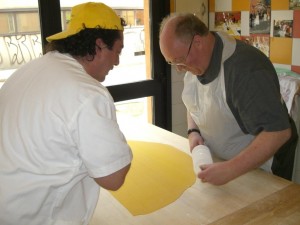
We are taking a pasta making class at the La Vecchia Scuola Bolognese, located on the Via Malvasia just outside the walls of what is one of the oldest university towns in the world. The school is actually a serious culinary school, founded by Alessandra Spisni, who is locally known for her cooking shows on television. The school is the only school in the world that trains sfoglini (specialty Italian pastry makers). Classes for amateurs and tourists are available, and specialty classes can be arranged in advance.
Alessandro is a magician with dough: he throws it up in the air and spins it around, and cut cut cut, snip snip snip, he has managed to turn an amorphous blob into a pretty pile of angel hair. Our goal is to make shells stuffed with a cream and cheese filling. We are shown how to roll out the dough and score it, then little dabs of filing are squeezed onto each square, and we are charged with rolling them into neat-looking shells. It’s the “neat-looking” part that proves bothersome. And can I just say, I am never going to complain about the high price of hand-made fresh ravioli again.
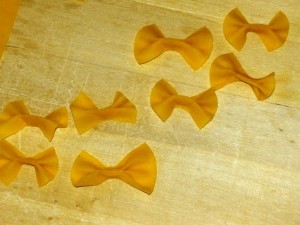
Next up: farfalle, the little bow ties. Alessandro makes two at once. Actually, I think I remember him making four at once — two with each hand — but can that even be possible? Back in the slow lane, the dough is refusing to shape itself into neat little bow ties, and my first efforts get a raised eyebrow, a sympathetic tap on the shoulder, and a friendly, “you can try again.” I find myself wondering if my attempts are fated to be sent to a food bank somewhere, although who knows, in this culinarily obsessed region, perhaps even patrons in need would turn up their noses at my misshapen creations. Or maybe they’d have a good laugh. But after a few tries, I start to get the hang of it, and manage to earn an enthusiastic “perfetto!” A triumphant end to the class — although I have a feeling that the title of pasta maker would be many many hours in my future.
Practicalities
The school puts out a daily, weekly, and seasonal schedule of classes, including pasta, bread-making, and deserts. The single-day tourist class involves three hours of class time and a celebratory lunch.
Updated from a 2012 article. The school continues with similar offerings.
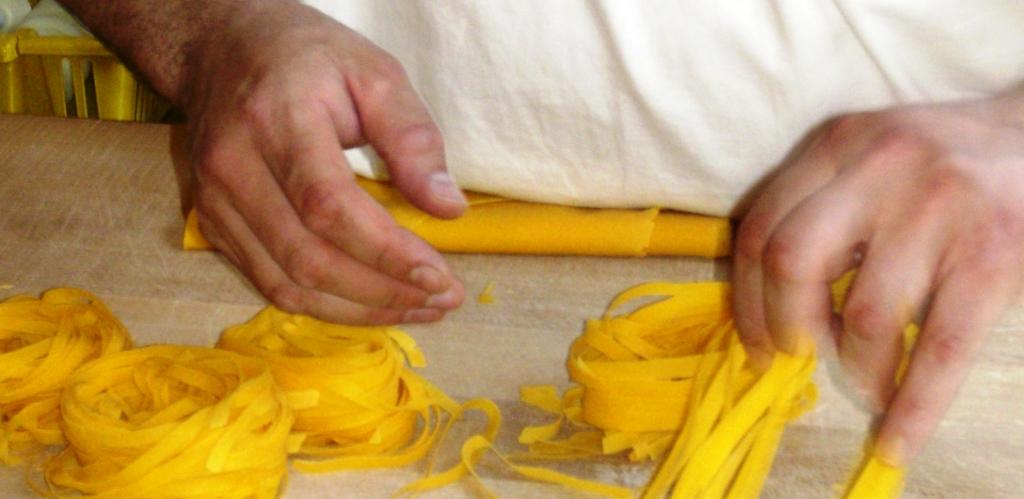
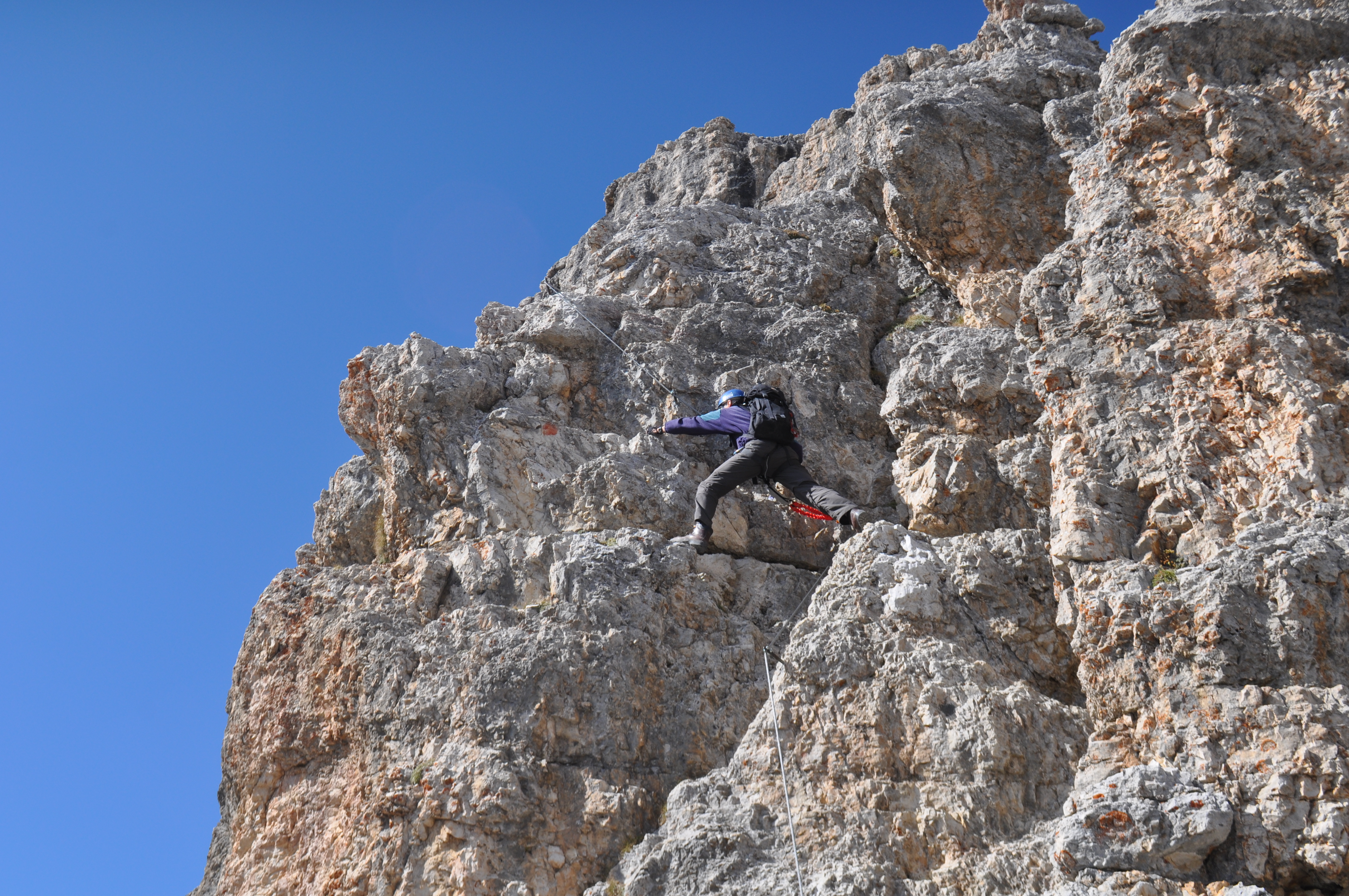
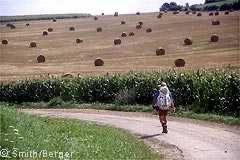
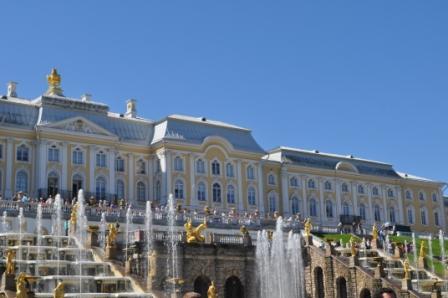
Very nice Karen. I just finished my 70-day solo backpacking trip in Europe, and spent 2 weeks in Italy. I didn’t learn how to cook there though, just to eat. My hosts really made such wonderful pasta dishes!
I love Bologna, with all its leaning towers and all its quirky little places — like the backward numbers on the clock in the basilica and the corner under the city hall where you can whisper and be heard across the room. There is always something new to discover there, and always a good restaurant within sight.